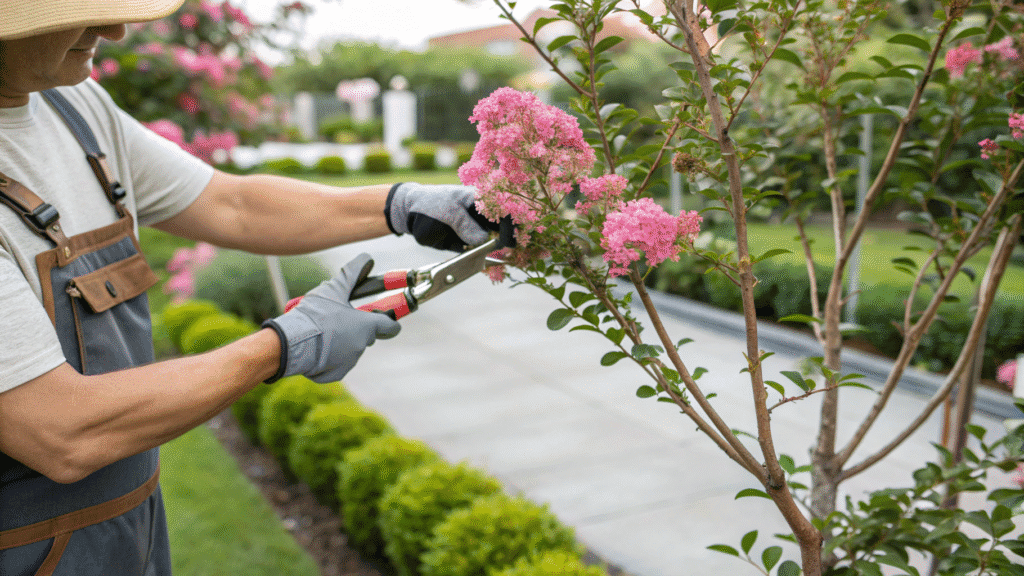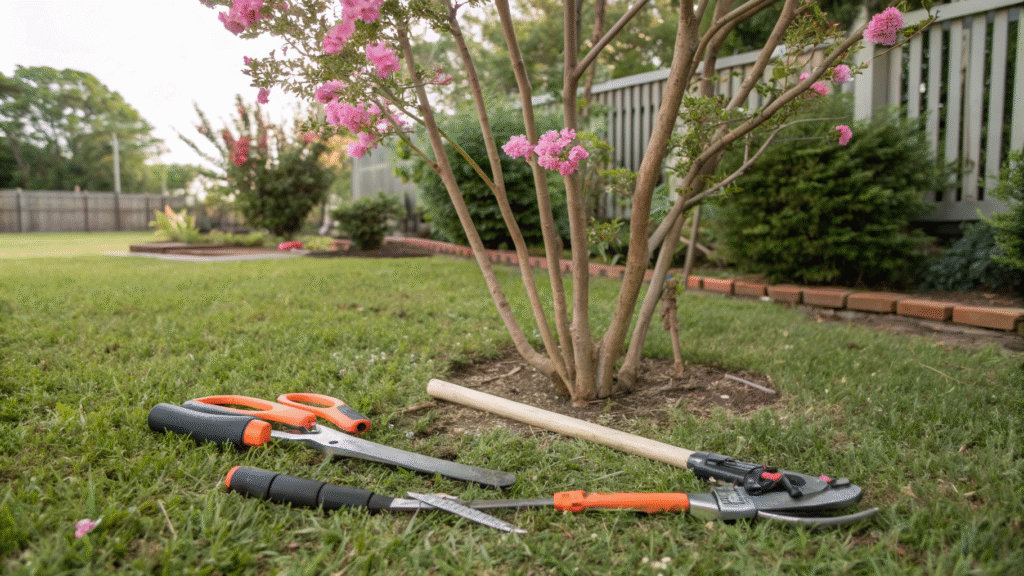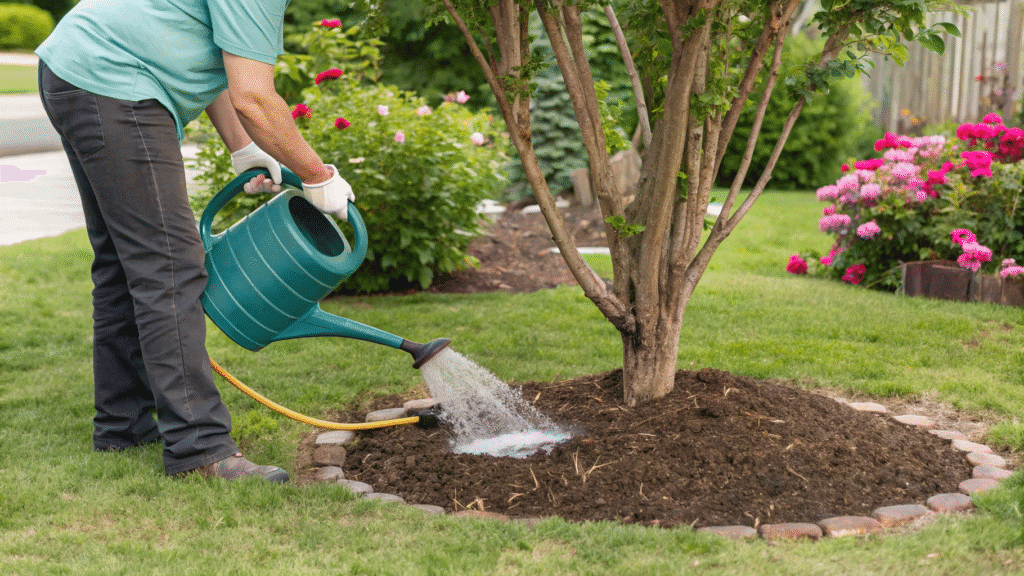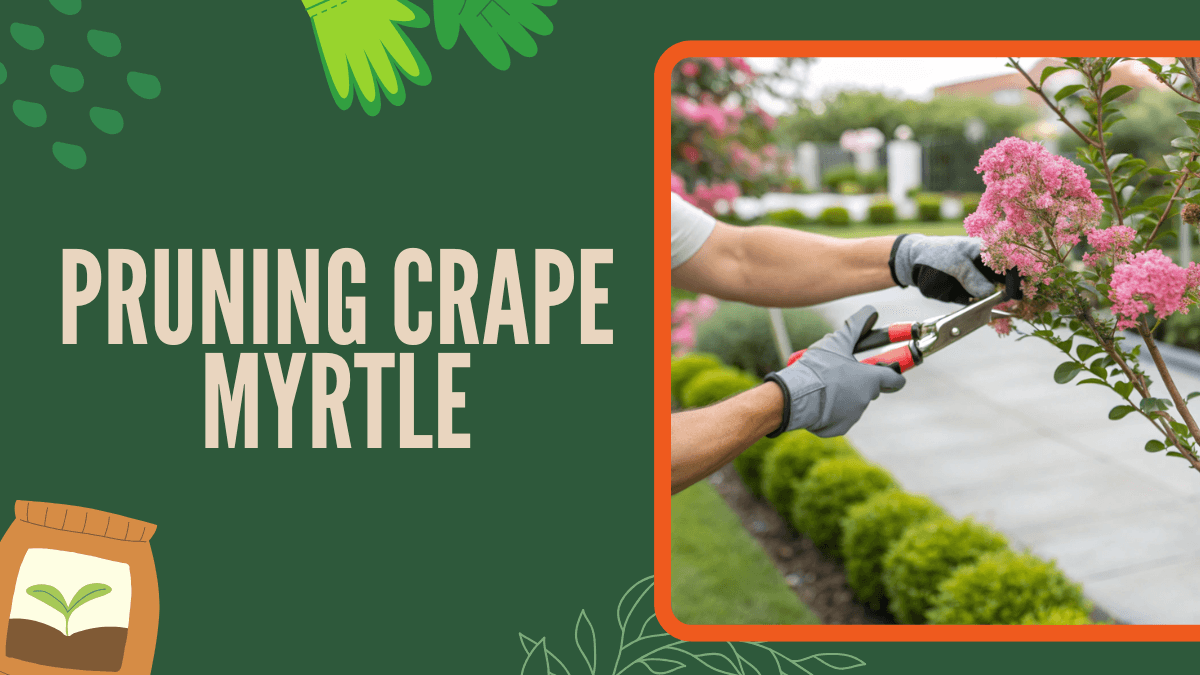Pruning crape myrtle can feel intimidating, especially when you’ve seen both beautifully shaped trees and others that look like they’ve been chopped in half. The truth is, pruning isn’t just about cutting branches; it’s about guiding the tree’s growth, promoting health, and enhancing its natural beauty.
Done right, pruning rewards you with fuller blooms, stronger stems, and a tree that becomes the pride of your landscape.
But done wrong? You can permanently damage your crape myrtle’s structure, stunt its growth, and even make it more prone to disease.
In this guide, you’ll learn exactly how to prune your crape myrtle the right way, the common mistakes to avoid, and the techniques professionals use to keep these Southern icons thriving year after year.
Table of Contents
Why Pruning Crape Myrtle Matters?

Crape myrtles (Lagerstroemia indica) are beloved for their long-lasting summer blooms, smooth bark, and elegant shape. However, without proper pruning, even the healthiest tree can lose its form and vitality.
Pruning matters for three main reasons:
- Health: Removing dead or diseased wood allows the tree to focus energy on strong, healthy growth.
- Shape: Smart pruning enhances the natural form, keeping the canopy airy and graceful.
- Blooms: Crape myrtles flower on new wood. That means pruning encourages the growth of fresh shoots, which results in more vibrant blossoms each season.
Think of pruning as giving your tree a fresh start, not a punishment. The key is knowing when and how much to cut.
When to Prune Crape Myrtles (Seasons & Timing)
Timing is everything when it comes to pruning crape myrtles. Pruning too early can expose the tree to frost damage, while pruning too late can reduce flowering.
The best time to prune is late winter to early spring, just before new growth begins. By this time, the tree is dormant, and you can easily see its branch structure. Once the threat of frost has passed but before buds break, it’s the perfect moment to shape the tree.
Avoid pruning in fall or early winter. Cutting during these times can encourage new growth that won’t survive cold temperatures.
Summer pruning: Light touch-ups are fine in summer if you’re removing spent blooms (a process known as deadheading) or small suckers at the base. But hold off on major cuts until winter dormancy.
TIP: If you live in colder climates, wait until early spring to be certain frost is no longer an issue.
Bonus: Read my in-depth article “When and Where to Plant a Crape Myrtle in USA“
Pruning Tools & Safety Tips

Before you make your first cut, make sure you have the right tools for the job. Dull or dirty blades can tear bark and spread disease, two things your crape myrtle definitely doesn’t need.
Essential Tools
- Hand pruners: For small branches up to ½ inch thick – (Check on Amazon)
- Loppers: For branches up to 1½ inches in diameter – (Check on Amazon)
- Pruning saw: For larger limbs – (Check on Amazon)
- Pole pruner: Optional, for reaching higher branches without a ladder – (Check on Amazon)
Safety & Maintenance Tips
- Always sanitize your tools before and after use with rubbing alcohol or a bleach solution.
- Wear gloves and eye protection to prevent cuts and debris injuries.
- Make clean, angled cuts just above a node or branch collar to promote quick healing.
- Never prune when the wood is wet, as it increases the risk of fungal infections.
5 Common Mistakes to Avoid
Even well-intentioned gardeners can go wrong when pruning crape myrtles. Here are the top five mistakes you’ll want to steer clear of
1. Topping the Tree
“Topping,” sometimes called “crape murder,” is when the main trunks are cut back harshly, leaving large, ugly stubs. This weakens the tree, ruins its natural form, and encourages spindly new growth. Always avoid topping.
2. Cutting Flush Against the Trunk
Flush cuts remove the branch collar, the swollen area where a branch meets the trunk, which helps the tree heal. Cutting too close invites disease and decay. Always cut just outside the collar.
3. Over-Pruning
Removing a lot at once can be tempting, but pruning more than 25% of the canopy can stress the tree and reduce flowering. Less is often more.
4. Neglecting Suckers
Crape myrtles often send up new shoots (suckers) from the base. If you ignore them, they’ll compete for nutrients and ruin the tree’s shape. Remove them promptly.
5. Using Dull Tools
Ragged cuts by dull blades take longer to heal and make the tree vulnerable to disease. Keep tools sharp and clean for every session.
Proper Pruning Techniques
Now that you know what not to do, let’s look at how to prune properly. Professional landscapers use three key techniques: deadwood removal, shaping, and thinning.
1. Deadwood Removal
Start by inspecting the tree for dead, diseased, or crossing branches. Deadwood can be identified by its brittle texture or lack of green tissue beneath the bark. Cut these branches back to healthy wood using sharp pruners or a saw.
This step is essential not just for appearance but for preventing disease spread and improving air circulation within the canopy.
2. Shaping
Once deadwood is gone, step back and look at the tree’s natural form. Crape myrtles are naturally vase-shaped, open in the center with gently arching branches.
Your goal is to enhance, not change, that shape. Remove awkward limbs that grow inward or rub against others. Always prune with balance in mind, keeping the canopy open enough for sunlight to filter through.
Avoid cutting main trunks unless necessary. Instead, focus on side branches that disrupt the flow or clutter the interior.
3. Thinning
Thinning is about strategic removal rather than heavy cutting. By selectively trimming smaller branches, you allow more light and air to reach the inner canopy, reducing the risk of powdery mildew, a common crape myrtle issue.
Aim to leave 3 to 5 strong trunks as the tree matures. These form the main framework. Trim away smaller stems growing too close together or those that cross.
When finished, your crape myrtle should have an airy, natural structure that looks like it grew that way on purpose, not one that’s been “cut back.”
Fertilizing, Mulching, Watering Crape Myrtle

Proper pruning is only half the equation. How you care for your crape myrtle afterward determines how well it recovers and blooms.
Fertilizing
After pruning, feed your crape myrtle with a balanced, slow-release fertilizer (such as 10-10-10). Apply it in early spring as new growth appears. Avoid excessive nitrogen, which encourages leaf growth over flowers.
Organic alternatives, like compost or well-rotted manure, also work well and improve soil structure over time.
Mulching
Spread a 2–3 inch layer of mulch around the base, but keep it a few inches away from the trunk to prevent rot. Mulch helps retain moisture, suppress weeds, and regulate soil temperature.
Watering
Crape myrtles are relatively drought-tolerant once established, but young or freshly pruned trees need consistent moisture.
Water deeply once a week during dry spells, ensuring the soil stays evenly moist but not soggy.
Avoid frequent shallow watering, as it promotes weak root systems.
TIP: After heavy pruning, consider applying a light layer of compost tea or organic tonic to encourage quick recovery and blooming.
Conclusion
When you understand the tree’s natural rhythm and growth habits, you can guide it to flourish year after year.
By pruning at the right time, using clean tools, avoiding harsh cuts, and following proper techniques, you’ll enjoy a crape myrtle that’s not only healthy but also breathtakingly beautiful through every season.
If you’d like to dive deeper into overall crape myrtle care, from choosing the right variety to soil preparation and pest control, check out my complete guide here. It’ll help you grow and maintain your tree like a pro from root to bloom.


 ChatGPT
ChatGPT
 Perplexity
Perplexity
 Claude
Claude
Leave a Reply